4 Moves That Build Arms Faster Than Bicep Curls After 40, According to US Army Coach

If you’ve been faithfully doing bicep curls for years but notice your arms aren’t responding like they used to, you’re not alone. Many people over 40 find that their go-to isolation exercises become less effective as their bodies change with age. The good news is that there are better moves that can actually build your arms faster and more efficiently than traditional curls. Here’s how to maximize your arm-building potential with these four powerful exercises.
What Changes in Your Body After 40 That Make Some Exercises Less Effective
There are a number of changes in our bodies as we age that make some exercises less effective:
- Sarcopenia, or age-related muscle loss, begins around age 35–40 and accelerates after 50.
- Recovery time increases due to slower muscle protein synthesis.
- Hormonal changes, like reduced testosterone, growth hormones, and estrogen in women, reduce hypertrophy potential.
- Joint wear and tear, such as arthritis and tendon stiffness, makes isolation moves like curls harder on the elbows and wrists.
- Collagen and connective tissue changes lead to decreased tendon elasticity, increasing the risk of injury from repetitive isolation moves.
- Neuromuscular efficiency lessens, which means slower nerve firing, and fewer muscle fibers are recruited in each exercise.
Because of these changes, multi-joint, compound exercises that stimulate various muscle groups and hormones are more effective.
Why Other Moves Work Better for You Over 40
Compound lifts that involve pushes, pulls, and presses work multiple muscle groups, stimulate more overall growth, and reduce overuse strain. They increase functional strength for real-world tasks like lifting groceries, fixing your car, and pushing or pulling other everyday items. Compound lifts also generate a greater anabolic hormone release compared to isolation curls, as they engage multiple joints and, in turn, improve bone density, tendon resilience, and joint health, which are critical after 40. They also support metabolic health, which is important since metabolism slows with age.
4 Arm Moves That Work Better Than Curls After 40
Close-Grip Push-Ups (or Bench Press)
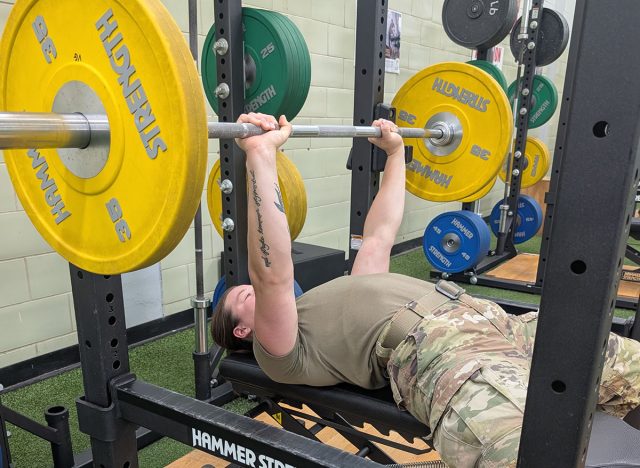
Muscles worked: Triceps, chest, and shoulders.
Points of Performance: Place hands shoulder-width apart or slightly narrower. Keep elbows tucked near your side (not flared). Lower chest to just above ground, and press back up.
Modification: Perform against a bench/wall if wrists or shoulders ache.
Chin-Ups (Underhand Grip)
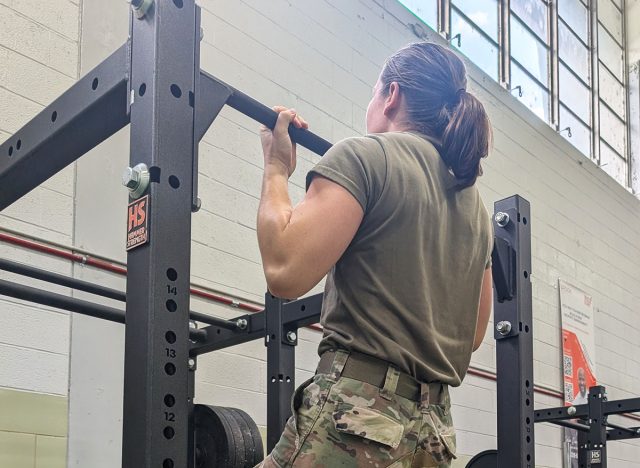
Muscles worked: Biceps, back, forearms.
Points of Performance: Place palms facing you and hands shoulder-width apart. Grip the bar, start hanging, and pull the chest toward the bar. Lower slowly.
Modification: Use resistance bands or a lat pulldown machine if a full chin-up is not possible.
Dips (Parallel Bars or Bench Dips)
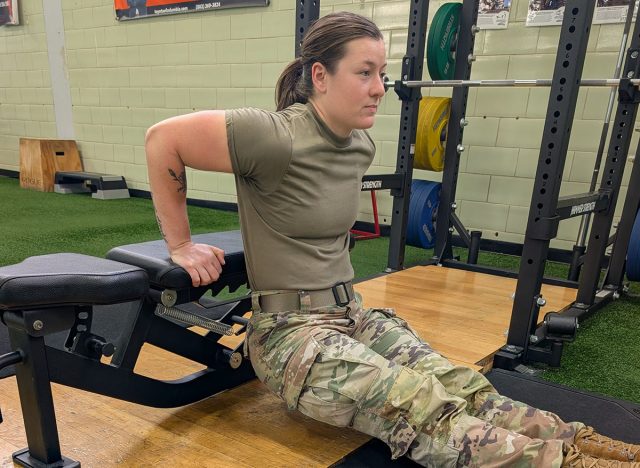
Muscles worked: Triceps, chest, and shoulders.
Points of Performance: Place hands on parallel bars, arms straight. Lower body until elbows are at about a 90° angle. Push back up.
Modification: Bench dips with feet on the floor.
Overhead Press (Dumbbell or Barbell)
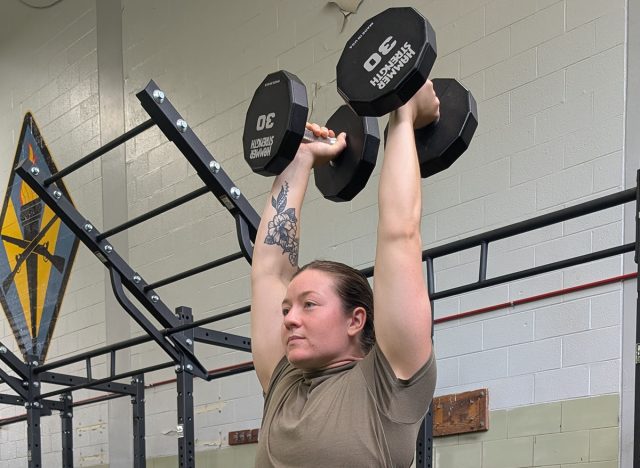
Muscles worked: Shoulders, triceps, upper chest.
Points of Performance: Stand tall, holding weights at shoulder height. Press weights overhead until arms are fully extended. Lower weights back to shoulder height with control.
Modification: Perform seated press for lower back support.
How Often You Should Do These Exercises Each Week
While keeping in mind recovery may take longer as we progress in age, being aware of persistent soreness or joint pain is paramount to recovery, progression, and safety. Aim for completing these exercises 2–3 times per week, with at least 48 hours between sessions for the same muscle group. Target 2-4 sets per exercise with a repetition range of 8-12, which is optimal for strength and size changes.
What You Should Eat or Do Lifestyle-Wise to Get Better Arm-Building Results
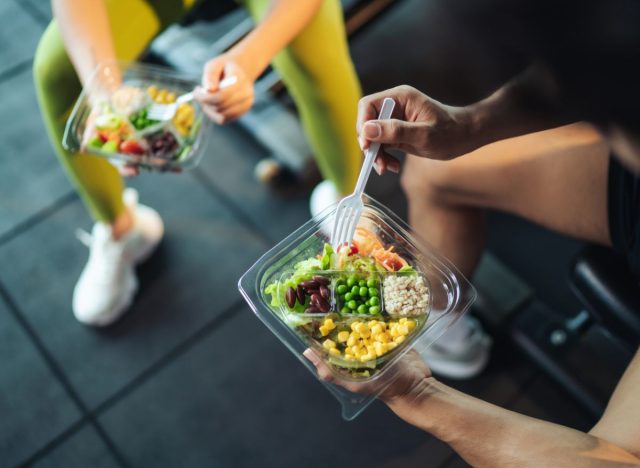
One key recommendation to get better arm-building results is optimizing protein intake. Optimal protein intake to support muscular gains is 1.2–1.6 grams of protein per kilogram of body weight daily. This amount is higher than what I recommend to younger Soldiers, due to reduced protein utilization as we age. Protein intake should be spread out throughout the day to optimize your training. As a rule of thumb, many adults can best process about 20-30 grams of protein per meal or snack.
Those over 40 should also prioritize leucine-rich foods like eggs, lean meat, whey protein, and soy to stimulate muscle protein synthesis; Omega-3s (fish, flax) to improve muscle recovery; Vitamin D and calcium to support bone health; and hydration to help with tendon and joint health.
Ensuring a proper night’s sleep is very important because this is when our body heals, resets, and grows. Aim for 7-9 hours of quality sleep per night to maximize your gains in the gym.
Additionally, be sure to manage stress, as cortisol can blunt muscle growth, and avoid smoking and excess alcohol.
The U.S. Army’s Holistic Health and Fitness (H2F) system combines all essential aspects of physical and non-physical well-being, understanding that each domain of health – physical, mental, nutritional, spiritual, and sleep – impacts the others. No one thing is the answer. Training in a silo won’t get you the gains you want. Every domain has a place.
How Soon Can You Expect to See Your Arms Getting Stronger and More Defined

Neuromuscular improvements can occur in 2–4 weeks — you’ll feel stronger before looking bigger. Visible muscle definition is usually noticeable by 8–12 weeks with consistent training, nutrition, and recovery. Stay patient and remember progress may be slower after the age of 40. Results depend on genetics, diet, and adherence, but consistency still yields steady gains.
Keep in mind that training or even wellness is a multifactorial problem set, and not everything can be fixed at once. Focus on starting a good routine in the gym, and then start to work on your diet. Allow those results to drive your desire to get better and tackle your sleep, and inspire you to check your mood periodically.
For more information on best practices in holistic health, check out the Army’s All You series on YouTube – it’s the Army’s way of sharing its state-of-the-art H2F weapon system with the rest of the nation. It’s a game-changer on every level.
Looking for more easy ways to lose fat? Here’s How Long Your Walking Workout Should Be To Shrink Belly Fat.